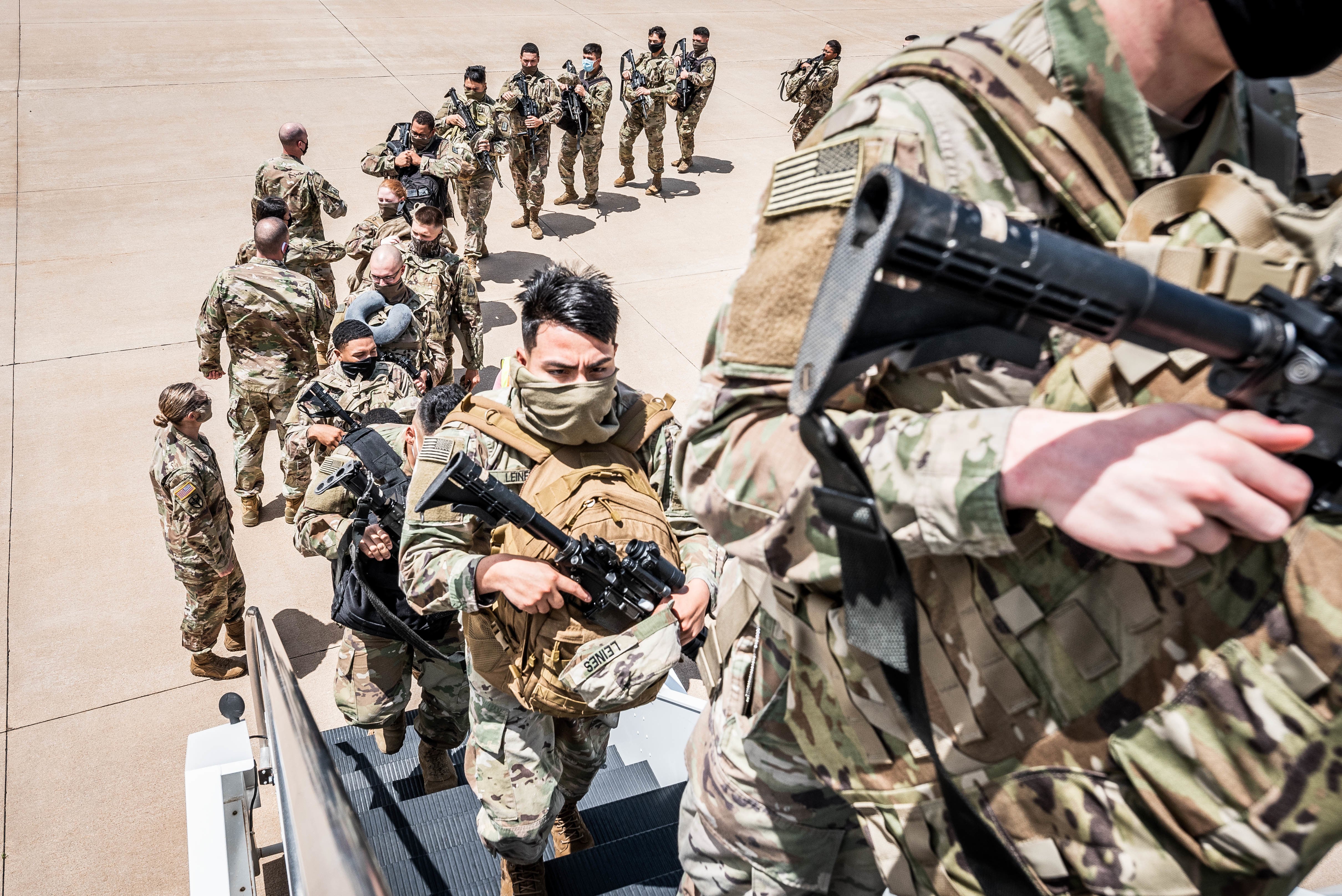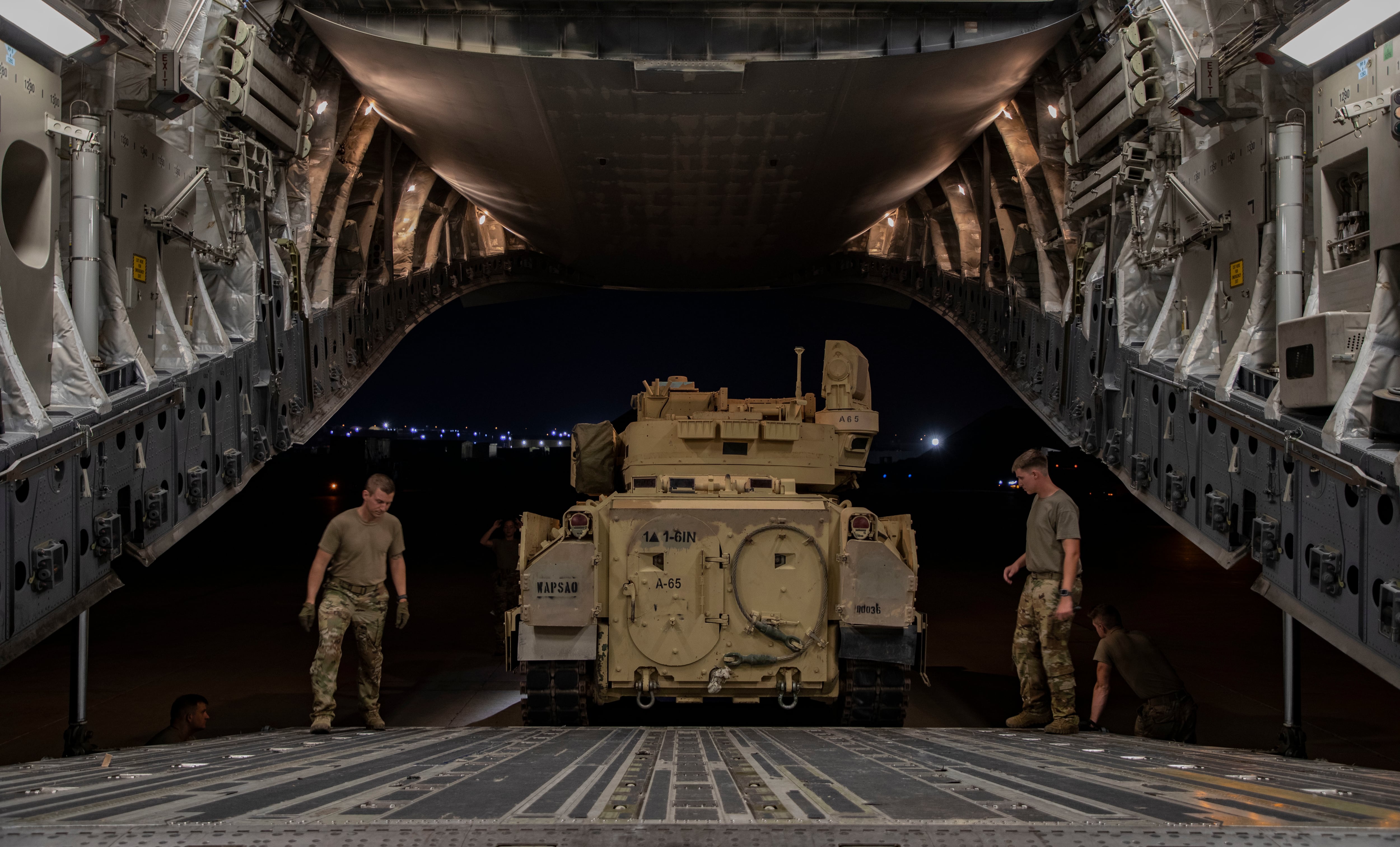As the Army faces tighter budgets in the coming years, keen observers wonder whether ambitious modernization programs will be curtailed to make way for end-strength growth, or vice versa.
“We’d like a much bigger Army, but what I have to do at my level is say, you know, what can we actually afford,” Army Chief of Staff Gen. James McConville said Wednesday during a virtual discussion hosted by the Heritage Foundation. “That’s what we’re taking a hard look at.”
The service’s studies suggest that more soldiers are needed to meet the demand from combatant commands. In recent months, McConville has expressed concern about the operations tempo already placed on air defense and armored brigades, as well as the force at large.
“We’re going to every single area and taking a look at where we could find the money to modernize the Army. I believe we absolutely must do that,” McConville added. “At the same time, the end-strength we have is what we need to keep, and we got to make sure that every one of those soldiers that we send into harm’s way is trained so we’ve got to maintain the readiness also.”
Army leaders told Congress in March 2020 that 74 percent of active duty brigade combat teams were at the highest levels of tactical readiness, an improvement over the poor readiness metrics reported in 2018.
The active duty Army met its end-strength goal last year of 485,000 soldiers. The service is now planning for a goal of 486,000 soldiers in fiscal 2021.
“Beyond that, we project sustained growth of 1,000-1,500 Soldiers per year,” said Lt. Col. Junel Jeffrey, an Army personnel issues spokeswoman. “This measured approach focuses on getting the right people with the right skills in the right jobs and is a key part of putting people first.”
RELATED

The Army has been working toward a goal of more than 500,000 active duty soldiers. Senior leaders have also stated that the goal could fluctuate up or down.
At the same time, the Army has been channeling billions of dollars into testing and procuring new weapons, like long-range precision fires and vertical lift aircraft, to replace decades-old equipment.
“Every program counts, and people say, ‘well, you can’t have everything.’ But what you can’t afford to do is waste one dollar, and we’ve put a lot of processes in place to make sure that we can modernize the Army,” McConville said. “Also [we’re] working very closely with industry, so they’re investing along with us and we’ve seen them do that very, very well where they’ve invested a lot of their own money in research and development.”

Army leaders have been conducting deep dives into their budget, dubbed “night court” reviews. The process involves meticulously combing through programs and shifting funds around to prioritize those deemed most important. Those reviews are expected to continue.
Many of the Army’s future weapons are still in research and development, but as they become ready to procure and field, the service could face some difficult choices.
In the past, modernization has been the first thing cut from budgets, but that likely won’t be the case in the coming years, according to Lt. Gen. James Pasquarette, Army deputy chief of staff for programs.
“Since the end of the Cold War, when the Army has been faced with a significant downturn in the top line, the easy button has been modernization,” Pasquarette said in November at the Association of the U.S. Army. Leaders “have turned down the modernization dial in order to preserve end strength ... whatever was left over after that, we put into readiness to ensure we had the ability to fight.”
But the service is now facing a “once-in-every-40-years opportunity” and “Russia and China aren’t going anywhere,” Pasquarette added.
The Army’s number one modernization priority — long-range precision fires — is expected to deliver an operational battery of mid-range missiles that can hit land and maritime targets beyond 300 miles in fiscal 2023. An extended range cannon capable of hitting targets from more than 40 miles away is on a similar timeline.
Kyle Rempfer was an editor and reporter who has covered combat operations, criminal cases, foreign military assistance and training accidents. Before entering journalism, Kyle served in U.S. Air Force Special Tactics and deployed in 2014 to Paktika Province, Afghanistan, and Baghdad, Iraq.




